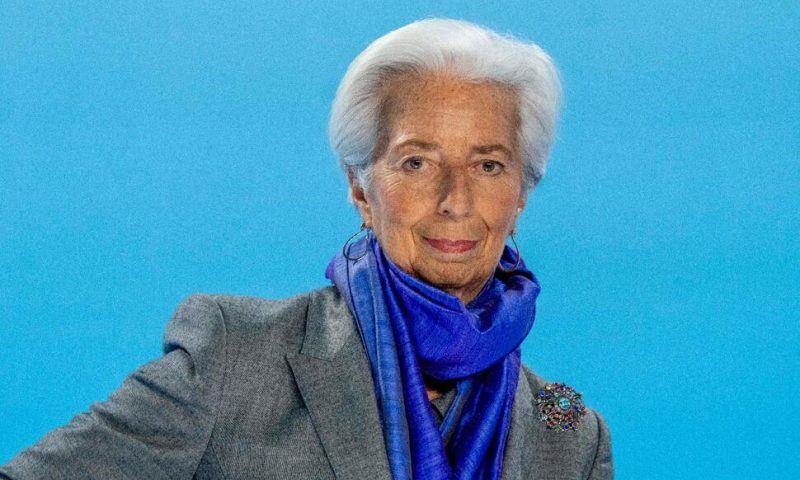The European Central Bank has slowed its record pace of interest rate increases
FRANKFURT, Germany — The European Central Bank slowed its record pace of interest rate increases slightly Thursday but promised that more hikes are on the way, joining the U.S. Federal Reserve and other central banks in reinforcing an inflation crackdown despite some recent headway against the high prices that are plaguing consumers.
The ECB, Bank of England and Swiss National Bank dialed back their increases to half a percentage point from three-quarters in a blitz of central bank action Thursday, as did the Fed a day earlier.
Both ECB President Christine Lagarde and Fed Chair Jerome Powell made it clear that more rate hikes are coming. Lagarde told reporters that the ECB’s smaller half-point increase did not mean its rate-hiking campaign was shifting down a gear.
“We have made progress over the course of the last few months, but we have more ground to cover, we have longer to go and we are in for a long game,” she said. “We’re not pivoting, we’re not wavering.”
She said rates could go up at a pace of a half-percentage point per meeting “for a period of time.” Increases that big were rare before the current burst of inflation stemming from Russia’s invasion of Ukraine and the higher energy prices it caused.
The decision puts the ECB at the aggressive end among central banks, according to Carsten Brzeski, chief eurozone economist at ING bank.
“While other major central banks have started to prepare for the end of their hiking cycles, the ECB is giving the impression that it has just got started,” he said.
Inflation recently has made small declines from painfully high levels in many economies. But officials are underlining that inflation is not yet corralled from decade highs and more must be done to wrestle down price spikes for energy, food and housing that are ravaging people’s finances.
Powell similarly warned there is “a long way to go” to control U.S. inflation. The comments took a bite from the stock market as investors hoping for a reprieve from sharply higher borrowing costs sold off shares.
Inflation in the 19 countries that use the euro currency eased to 10% in November from 10.6% in October, the first drop since June 2021. But Lagarde declined to say inflation has peaked, with high energy prices threatening a recession in Europe.
The ECB’s hike follows record increases of three-quarters of a point in July and October. Half-point hikes are still bigger than the usual quarter-point moves before the recent bout of price spikes.
One reason for the ECB sticking to a tough anti-inflation message: the growth outlook for the European economy has improved from what had been expected to be possible disaster.
The eurozone could face a recession that’s “short-lived and shallow,” with economic output shrinking at the end of this year and the first three months of 2023, the bank said.
Two straight quarters of contraction is one definition of a recession, although the economists on the eurozone business cycle dating committee use a broader range of data such as unemployment and the depth of the downturn.
Despite energy prices surging after Russia cut off most natural gas shipments, the European Union succeeded in largely filling underground storage for the winter heating season. That has eased concern about running low on gas, which is used for heating, industry and power generation, and reduced fears of rolling electricity blackouts and industrial shutoffs.
Interest rate increases are central banks’ chief tool to fight inflation. Higher benchmarks are soon reflected in higher market borrowing costs for consumers looking for mortgages and businesses needing credit to operate or invest in new facilities. More costly credit reduces demand for goods, and, in theory, also reduces price increases.
The flip side is that higher rates can slow economic growth, and that has become a concern in the U.S. and Europe. The slightly improved, or at least less disastrous, outlook for growth in the eurozone is seen as a green light for Lagarde and the ECB to keep their focus firmly on inflation.
Bank officials say getting tough now prevents inflation from becoming chronic and requiring even more painful medicine.
The ECB’s benchmark rate for lending to banks now stands at 2.5%, and its rate on deposits left overnight by commercial banks is 2%.
Between the July and October meetings, the bank raised both benchmarks by 2 percentage points in just three months, the fastest pace since the founding of the shared euro currency in 1999 and covering ground that took 18 months in early rate-raising cycles.

